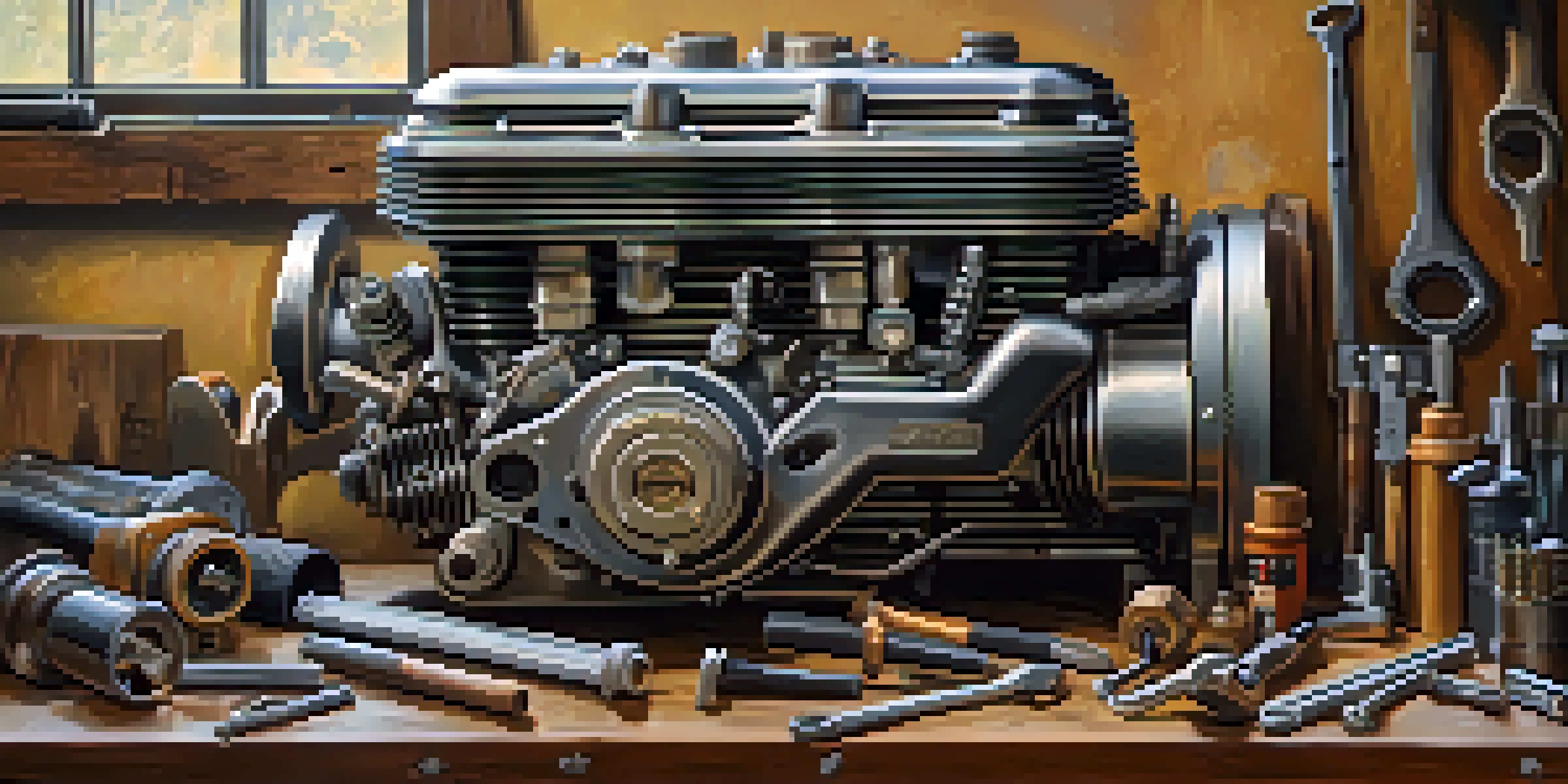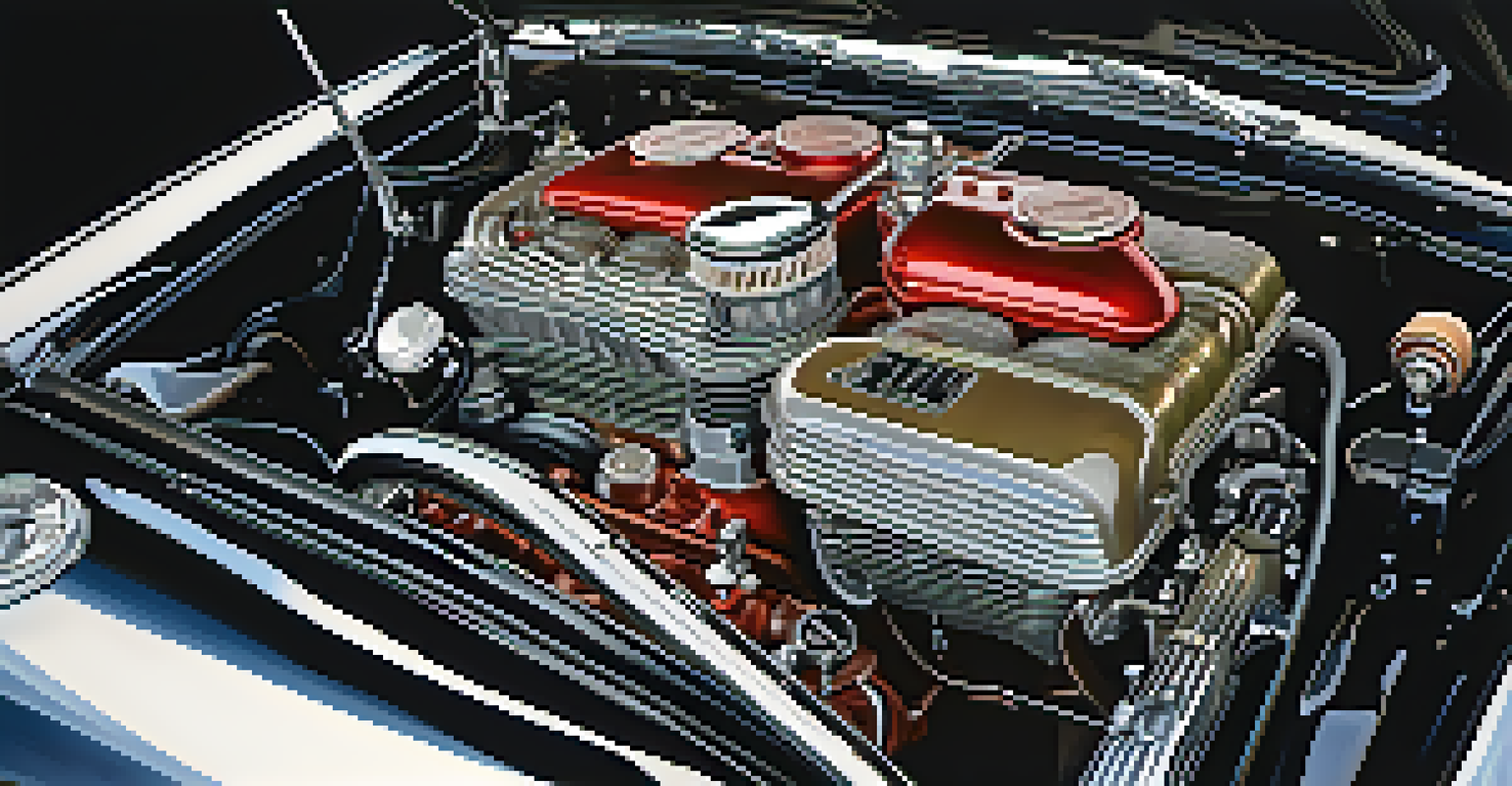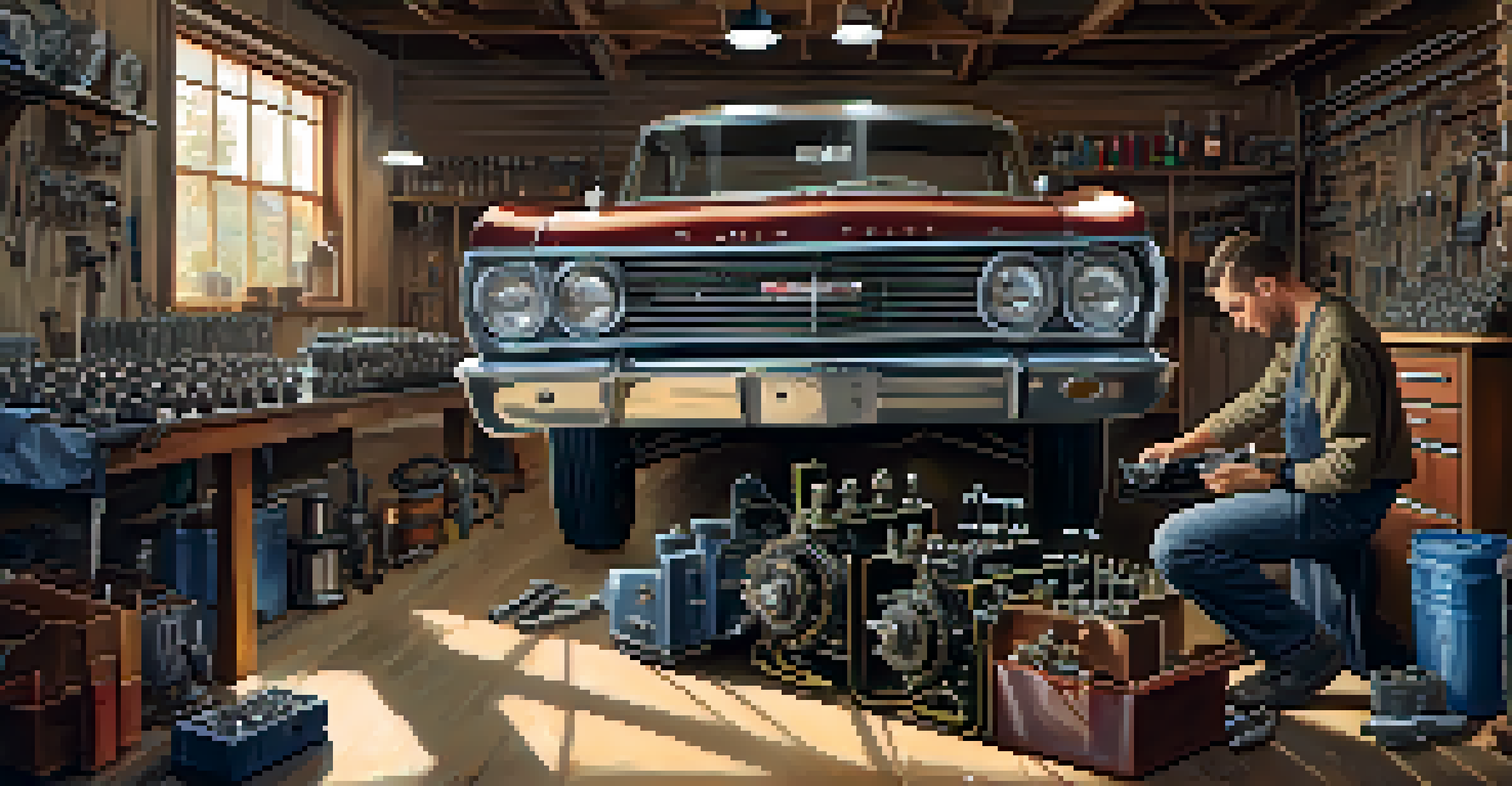Secrets to Restoring Vintage Car Engines Effectively

Understanding the Basics of Vintage Car Engines
Before diving into restoration, it's essential to understand the unique characteristics of vintage car engines. These engines often differ significantly from modern ones, featuring simpler designs and fewer electronics. This simplicity can actually be an advantage, as it allows for easier repairs and modifications.
The best car safety device is a rear-view mirror with a cop in it.
Familiarizing yourself with the engine's original specifications and design will help you appreciate its historical value. Each vintage car has its quirks and charm, making knowledge about its specific engine crucial. Think of it as learning a new language; the more you know, the better you can communicate with the vehicle.
Moreover, understanding how these engines function will empower you to make informed decisions during the restoration process. Whether it's identifying the right parts or troubleshooting issues, a solid grasp of the basics can lead to a more successful restoration.
Gathering the Right Tools for Restoration
Having the right tools is a key step in restoring vintage car engines effectively. Start with a comprehensive toolkit that includes wrenches, screwdrivers, and specialty tools designed for vintage vehicles. Investing in quality tools not only makes the job easier but can also save you time and frustration.

Consider also acquiring a torque wrench, which is vital for ensuring all bolts are tightened to the manufacturer's specifications. This can prevent future engine issues and enhance performance. Think of it as building a strong foundation for a house; without the right tools, your restoration efforts may crumble.
Understanding Engine Basics
Familiarizing yourself with the unique characteristics of vintage car engines enhances your appreciation and informs your restoration efforts.
Lastly, don’t underestimate the value of a repair manual specific to your car model. This document can provide invaluable insights and guidance throughout the restoration process, ensuring that you stay on track and make the most of your efforts.
Assessing the Current Condition of the Engine
Before you start any restoration work, a thorough assessment of the engine’s current condition is vital. This includes checking for leaks, corrosion, and any visible damage. Taking notes during this evaluation can help you prioritize repairs and budget your time and resources effectively.
Restoration is a process, not a destination.
Don’t forget to inspect the engine's internal components, such as the pistons and crankshaft. A borescope can be a handy tool for this, allowing you to see inside the engine without disassembly. Think of it as a doctor conducting an examination; a clear understanding of the engine's health is essential for a successful treatment plan.
Once you’ve completed your assessment, you’ll have a clearer picture of what parts need replacing and what can be salvaged. This step is crucial, as it lays the groundwork for your restoration strategy.
Cleaning the Engine: The First Step to Restoration
Cleaning the engine is often the first and most important step in the restoration process. Dirt, grime, and old oil can hinder your ability to assess the engine's condition accurately. Start with a degreaser that’s safe for vintage engines, ensuring the engine is free from contaminants before diving deeper.
Using a pressure washer can be effective, but be cautious not to damage sensitive components. A gentle approach is often best; think of it as giving your car a spa day, where the goal is to reveal its true beauty without causing harm.
Importance of Proper Tools
Investing in quality tools and a specific repair manual is crucial for effective restoration, ensuring a smoother process and better results.
Once the engine is clean, you’ll not only have a better view of what needs fixing but also create a suitable working environment. A clean engine can also prevent future problems related to overheating and corrosion, making it a crucial step in the restoration journey.
Replacing or Rebuilding Engine Components
As you dig deeper into the restoration process, you may find that certain engine components need replacing or rebuilding. Common culprits include gaskets, piston rings, and valves, which can wear out over time. Assessing whether to replace or rebuild depends on the condition of the parts and your budget.
If you choose to rebuild, ensure you have the necessary skills and tools, or consider seeking help from a professional. This can often be more cost-effective than replacement, especially for rare or hard-to-find parts. It's like restoring a piece of furniture; sometimes, a little TLC can bring back its original charm.
Having a network of suppliers for vintage parts can also be incredibly helpful. Many enthusiasts and shops specialize in vintage car parts, making it easier to find what you need to keep your restoration on track.
Reassembling the Engine: Tips for Success
Once you’ve replaced or rebuilt the necessary components, it’s time to reassemble the engine. This process requires patience and attention to detail. Keep your workspace organized and refer back to your notes and the repair manual to avoid missing any crucial steps.
Using labeled bags for screws and parts can simplify the reassembly process, ensuring that everything goes back in its rightful place. Think of it as putting together a puzzle; each piece has its designated spot, and losing one can mean trouble later on.
Thorough Engine Assessment
Conducting a comprehensive assessment of the engine's condition is vital for prioritizing repairs and developing a successful restoration strategy.
After reassembly, double-check all connections and ensure that everything is tightened to the recommended specifications. Taking the time to do this can save you from headaches down the road, as a well-assembled engine is more likely to perform reliably.
Testing the Engine: The Final Frontier
After all your hard work, it’s time to test the engine and see how it performs. Start by checking for any leaks or unusual sounds during the initial run. This phase is crucial, as it allows you to catch any issues early on before they turn into bigger problems.
Take the car for a short drive to assess the engine’s performance under normal conditions. Pay attention to acceleration, any strange vibrations, and how the engine responds to your commands. It’s like taking a new puppy for a walk; you want to see how well it behaves in the real world.

Finally, don't be discouraged if everything isn't perfect right away. Tuning and adjustments may be necessary, so be prepared to make tweaks along the way. This ongoing process is part of the joy of restoring vintage cars, allowing you to continuously improve your masterpiece.